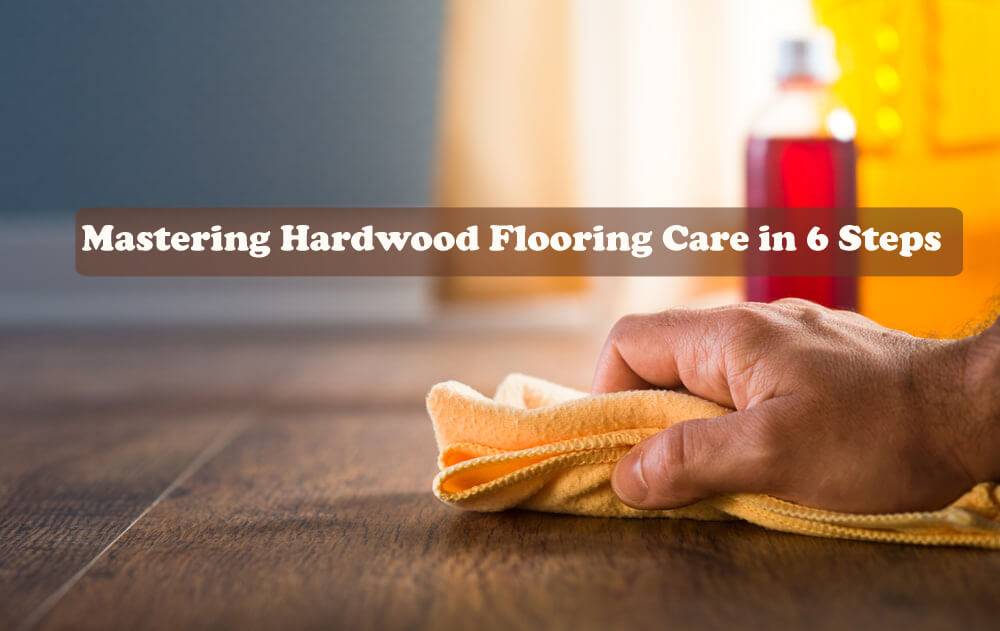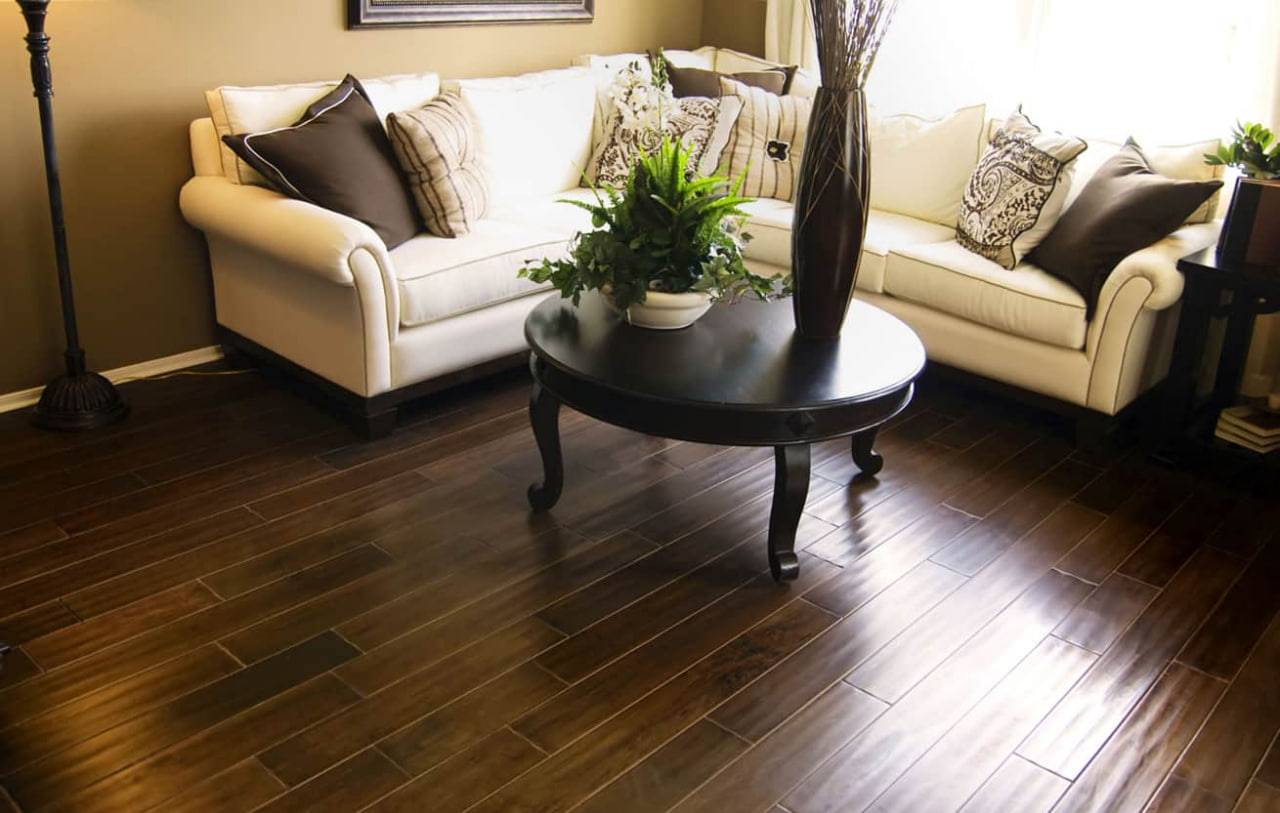Have you swapped out your old carpet or laminate for stunning hardwood floors? Now comes the essential part: keeping them looking their best! While a quick microfiber mop and cleaning solution seem like the key to long-lasting shine, there’s more to the story.
Here’s the surprising truth: according to experts, you should avoid products that claim to “polish,” “shine,” or “revitalize” your wood floors. As Brett Miller, a National Wood Flooring Association authority, explains, these solutions offer a temporary fix but can actually damage the finish in the long run.
To learn the proper techniques for all types of hardwood floors, solid, engineered, or reclaimed, we consulted with industry experts Mark Whatley and Tommy Sancic. They’ll share their wisdom on maintaining that gorgeous wood floor luster without sacrificing the finish.
Unleash the shine of your hardwood floors. Explore expert care tips and Dex Flooring‘s latest collections.
What is the best thing to use to your hardwood floors care?
For everyday cleaning, a microfiber mop and the right cleaning solution are key. However, the “right” solution depends on the type of wood finish you have. Experts recommend consulting a professional or your floor’s manufacturer for specific product recommendations.
If you’re looking for a DIY option, there are a few possibilities:
- Murphy Oil Soap: Combine a few drops with warm water for a gentle cleaning solution.
- Natural Cleaning Products: Explore options like Koala Eco Floor Cleaner, which uses essential oils like mandarin and peppermint.
Be cautious with vinegar: While some recommend a water and white vinegar solution, it can potentially dull the floor’s finish over time. It’s best to avoid this unless specifically recommended for your floor type.
Here’s what you should absolutely never use on a hardwood floor:
- Chlorine Bleach (even diluted): This weakens the wood itself, causing structural damage.
- Harsh Chemicals: Sancic, a hardwood flooring expert, advises against any harsh chemicals as they can cause the finish to haze. This hazing creates a cloudy appearance, especially on polyurethane finishes.
Luminous Hardwood Floors with Daily Care and Maintenance
Maintaining the brilliance of your hardwood floors is an achievable feat. This comprehensive guide outlines a six-step process for effective cleaning, minor scratch repair, and environmental considerations to ensure your floors stay beautiful for years to come.
Step 1: Regular Sweeping and Damp Mopping
- Daily Sweeping: A daily sweep with a soft-bristled broom or microfiber mop effectively removes dust and debris, preventing them from dulling the floor’s finish.
- Weekly Damp Mopping: Employ a microfiber mop dampened with a manufacturer-recommended cleaning solution suitable for your specific floor finish. Avoid excessive moisture, as this can damage the wood.
Step 2: Thorough Vacuuming
- Regular Vacuuming: Regular vacuuming with a hard floor setting (which typically disables the beater bar) removes embedded dirt and fine particles missed by sweeping.
- Protective Attachments: Consider using a flat attachment for added protection against scratches.
Step 3: Addressing Minor Scratches
Minor scratches are a common occurrence and can be easily addressed using readily available solutions:
- Stain Markers or Wax Sticks: For surface-level scratches, a stain marker from a furniture touch-up kit or a wax stick can effectively restore the appearance.
- Sanding and Staining: For more noticeable scratches, utilize fine-grit sandpaper to gently buff the area. Apply a stain that matches your floor finish with a clean cloth, followed by a touch of polyurethane to restore shine.
Step 4: Strategic Use of Area Rugs
Area rugs and doormats placed in high-traffic areas serve a dual purpose:
- Scratch Protection: They provide an additional layer of defense against scratches and scuffs caused by foot traffic.
- Enhanced Aesthetics: Area rugs can add a touch of personality and style to your space.
Step 5: Maintaining Optimal Environmental Conditions
Wood floors are susceptible to environmental fluctuations:
- Humidity Control: Excessive humidity can cause warping. If you notice the floorboards cupping (edges curling upwards), identify and eliminate the moisture source. A dehumidifier can help regulate moisture levels.
- Combating Dryness: Extremely dry conditions can lead to cracking and splitting. A humidifier can introduce moisture back into the air, promoting the stability of your floors.
Step 6: Recoating for Long-Term Protection
Over time, even well-maintained floors may require recoating:
- Renewed Protection and Shine: Recoating involves applying a fresh layer of finish to the floor surface, revitalizing its luster and extending its lifespan. This process typically doesn’t require sanding.
By following these professional recommendations, you can ensure your hardwood floors remain a beautiful and enduring feature of your home.
Conclusion
Following these simple yet effective steps will not only keep them looking their best for years to come, but will also ensure they last a lifetime. So go ahead, walk across those gleaming floors with pride – you’ve earned it!
Want to stay on top of the latest trends and tips for your hardwood floors? Check out our Trendy Hardwood Floor FAQs below to find answers to some of the most commonly asked questions!
Hardwood Floor FAQs
Q: Are engineered hardwood floors easier to care for than solid hardwood floors?
A: Engineered hardwood floors can be slightly more resistant to moisture fluctuations than solid hardwood floors. However, the cleaning routine for both is generally similar. Refer to the specific care recommendations from your floor’s manufacturer for the best results.
Q: Can I use natural stone cleaning products on my hardwood floors?
A: It’s best to avoid using cleaning products designed for other surfaces like granite or marble on your hardwood floors. These products can be too harsh and potentially damage the finish. Stick with a gentle wood floor cleaner recommended by the manufacturer or a DIY option like diluted Murphy Oil Soap.
Q: Are robot vacuums safe for hardwood floors?
A: Yes, robot vacuums can be a great way to maintain your hardwood floors. Just ensure the model you choose has a setting specifically for hard floors, which typically disables the beater bar that can scratch the surface. Empty the dustbin regularly to prevent debris build-up.
Q: Is it okay to steam clean my hardwood floors?
A: Experts generally advise against steam cleaning hardwood floors. The excessive heat and moisture can warp the wood planks. If you have a particularly stubborn stain, consult a professional cleaning service experienced with hardwood floors.
Q: What are some popular eco-friendly cleaning options for hardwood floors?
A: There are several eco-friendly cleaning solutions available for hardwood floors. Look for options made with natural ingredients like vinegar (diluted with water!), plant-based oils, or essential oils. Always test any new cleaning solution on a small, inconspicuous area before using it on your entire floor.


